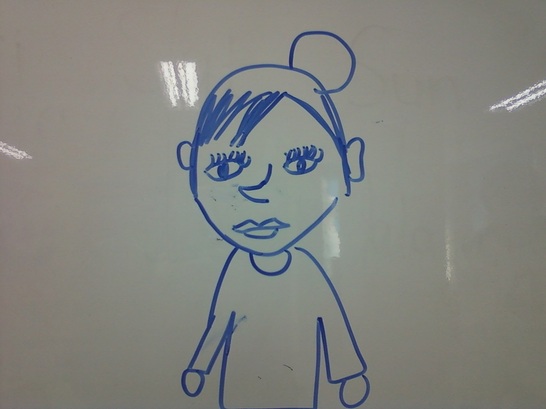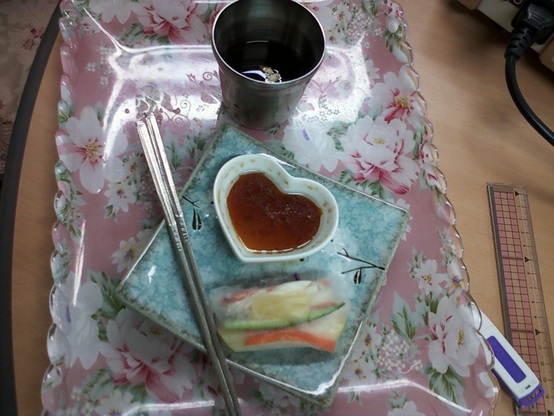One of my 6th grade students drew a picture of me on the white board today...I had no idea my nose was so pointy!
Candice in Korea
Today one of my co-teachers asked me if my culture has any special type of celebration for the ending off of one year and the beginning of another. I said, "Not really, just a big celebration on the 31st." I explained briefly about the way we celebrate and then asked him the same question... "Well, on new years eve we ring a bell and stay up until sunset," (he meant sunrise) "but no alcohol is involved." He then proceeded to tell me that during the whole month of December is when they celebrate with alcohol and then said "So we will have many parties next week, ok?" Hahaha, not that Korea ever needs a reason to drink. Anyway, so the Bell-ringing ceremony has been the tradition in Korea since 1952. People will gather around the bell tower at temples and toll the bell several times to welcome in the new year. Not just anyone can ring the bell. Participants include celebraties and other people who have played an important role in society. "The ringing of the bell originated in the Joseon Kingdom (1392-1910). In the early Joseon period, bells at Seoul's four main entrances and four small entrances were rung in the morning and evening to notify the opening and closing of the gates. The bells sounded 33 times in the morning to start the day and 28 times in the evening to announce the curfew."
Koreans are all about food! It's a way of life here, and part of everyday socializing. Not only do people go out for dinners and lunches, but also snack together throughout the day. I thought I'd be eating a lot less here, but I thought wrong hey! Don't get me wrong, I actually love it because by 4pm I'm usually starving so it's great to tame my stomach with a light snack. However, after 'Volleyball Wednesdays' we usually have more than a light snack... more like a huge meal (which then leads to drinking meaning I only leave school some hours later). At kindergarten there is endless food. Snacks before lunch include sweet potato, donuts, kimbab, songpyeon, yogurt and jam mix, all of which are usually home-made by one of the teachers. Afternoon snacks are usually take-out foods like tteokbokki, pizza, chicken, cake, chilli dogs, etc. Today I was given this tray: It's a Vietnamese snack similar to spring rolls, except for the fact that they're not fried. The ingredients include fruit, veggies, prawn or pork and it's wrapped in rice paper. [apparently the korean rice paper isn't exactly the same as the Vietnamese]. I think it's just called a summer roll, but in Korean it's walnamsam.
Served with chilli sauce and a cup of ginger, cinnamon & pinut mix. It was super delish! October and November are busy months for schools in Korea, not just because of finishing off the syllabus but because they are busy preparing for the school "festival". This I learnt, is just like an end-of year concert for the parents (and sometimes they even participate). I watched the festivals at each of my schools and took many video clips, but my favourite was by far the kindergarten kids. I found it so fascinating how they are trained from so young to dance and perform. So here's a clip of the dances the kids had to do. It is evidence of why todays pop stars are like they are. |



 RSS Feed
RSS Feed